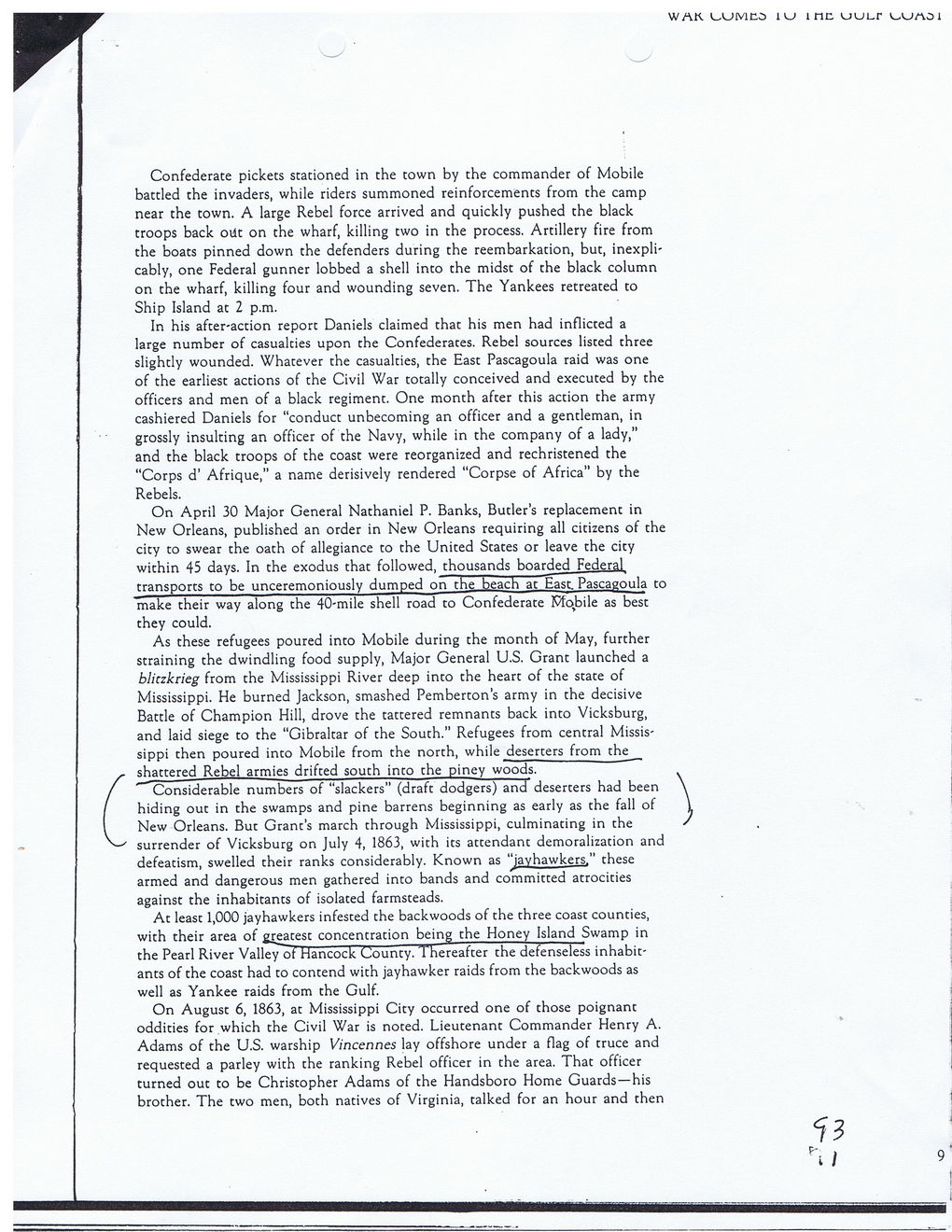This text was obtained via automated optical character recognition.
It has not been edited and may therefore contain several errors.
Confederate pickets stationed in the town by the commander of Mobile battled the invaders, while riders summoned reinforcements from the camp near the town. A large Rebel force arrived and quickly pushed the black troops back oidt on the wharf, killing two in the process. Artillery fire from the boats pinned down the defenders during the reembarkation, but, inexplicably, one Federal gunner lobbed a shell into the midst of the black column on the wharf, killing four and wounding seven. The Yankees retreated to Ship Island at 2 p.m. In his after-action report Daniels claimed that his men had inflicted a large number of casualties upon the Confederates. Rebel sources listed three slightly wounded. Whatever the casualties, the East Pascagoula raid was one of the earliest actions of the Civil War totally conceived and executed by the officers and men of a black regiment. One month after this action the army cashiered Daniels for “conduct unbecoming an officer and a gentleman, in grossly insulting an officer of the Navy, while in the company of a lady,” and the black troops of the coast were reorganized and rechristened the “Corps d’ Afrique,” a name derisively rendered “Corpse of Africa” by the Rebels. On April 30 Major General Nathaniel P. Banks, Butler’s replacement in New Orleans, published an order in New Orleans requiring all citizens of the city to swear the oath of allegiance to the United States or leave the city within 45 days. In the exodus that followed, thousands boarded Federal transports to be unceremoniously dumped on the beach a^liast- Pascagoula to make their way along the 40-mile shell road to Confederate Mobile as best they could. As these refugees poured into Mobile during the month of May, further straining the dwindling food supply, Major General U.S. Grant launched a blitzkrieg from the Mississippi River deep into the heart of the state of Mississippi. He burned Jackson, smashed Pemberton's army in the decisive Battle of Champion Hill, drove the tattered remnants back into Vicksburg, and laid siege to the “Gibraltar of the South." Refugees from central Mississippi then poured into Mobile from the north, while deserters from the shattered Rebel armies drifted south into the piney woods. Considerable numbers of “slackers” (draft dodgers) and deserters had been hiding out in the swamps and pine barrens beginning as early as the fall of New Orleans. But Grant’s march through Mississippi, culminating in the surrender of Vicksburg on July 4, 1863, with its attendant demoralization and defeatism, swelled their ranks considerably. Known as “iavhawkers.” these armed and dangerous men gathered into bands and committed atrocities against the inhabitants of isolated farmsteads. At least 1,000 jayhawkers infested the backwoods of the three coast counties, with their area of greatest concentration being the Honey Island Swamp in the Pearl River Valleyof Hancock County. Thereafter the defenseless inhabitants of the coast had to contend with jayhawker raids from the backwoods as well as Yankee raids from the Gulf. On August 6, 1863, at Mississippi City occurred one of those poignant oddities for which the Civil War is noted. Lieutenant Commander Henry A. Adams of the U.S. warship Vincennes lay offshore under a flag of truce and requested a parley with the ranking Rebel officer in the area. That officer turned out to be Christopher Adams of the Handsboro Home Guards—his brother. The two men, both natives of Virginia, talked for an hour and then

Old Spanish Trail Document (041)